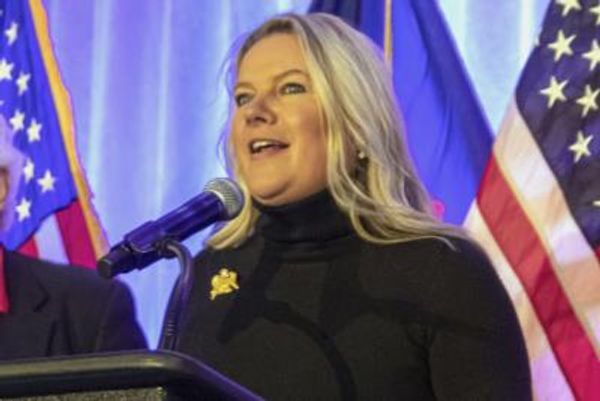Land degradation is a huge issue across the continent of Africa. One of its biggest drivers is biological invasions. This is when invasive species (species that aren’t naturally found in the area) arrive and produce large numbers of offspring which spread over long distances. Mlungele Nsikani, a land restoration specialist and environmental scientist, explains how ecological restoration is a great way to reverse land degradation.
What’s driving land degradation on the continent?
Africa is one of the most degraded continents in the world. About 23% of the surface of Africa, or over 700 million hectares of land, is already degraded. Another three million hectares is being further degraded annually.
Degraded land is land that has lost some of its natural productivity through processes caused by humans. It’s estimated that up to 40% of the planet’s land is degraded.
The “big five” drivers of land degradation globally and in Africa are:
biological invasions, where plant species have spread outside their indigenous area and disrupted the services provided by ecosystems
climate change driven events, such as intense droughts and severe fires
extractive activities, such as mining and over-harvesting
habitat transformation or fragmentation, including deforestation and poor agricultural practices
pollutants such as sulphur dioxide, and eutrophication – where algae and other plants take over plant life.
Factors that have made the situation worse in Africa include: development demands; a high dependency on natural resources at the household level (such as the use of firewood for cooking); agricultural practices (including clearing indigenous plants to grow cash crops); weak governance; insecure land tenure; pervasive poverty; and population growth.
What is ecological restoration?
Ecological restoration is the process of assisting the recovery of an ecosystem that has been degraded, damaged or destroyed. Removing invasive plants and reintroducing indigenous species is one way to reverse damage. Ecological restoration is about helping to create conditions in which plants, animals and microorganisms can carry out the work of recovery themselves.
Assisting recovery can be as complex as altering landforms (intentionally changing aspects of the landscape), planting vegetation, changing the hydrology (water flow), and reintroducing wildlife. It can also be as simple as removing an invasive species or reintroducing a lost plant species to the land.
Read more: Invasive alien species are a serious threat to the planet: 4 key messages for Africa
For example more than 8,750 plant species have found their way to South Africa. Over 785 species have made the country their permanent home on a significant scale and have had negative impacts. These include at least 14 Australian Acacia tree species which are invasive across South Africa. These cover about 554,000 hectares of the country.
They use up water resources and reduce grazing land. They also change soil microbial community structure, diversity and function. Invasive Acacia trees have established extensive woodlands that compete against native species, leaving little room for native plants and trees to grow. This costs more than R4 billion annually (about US$214 million) – the combined cost of clearing invasive species and the value of reduced ecosystem services in invaded areas.
The fynbos biome, which covers large parts of South Africa’s Western Cape province, has been the most affected. Since 1995, the publicly funded Working for Water programme has cleared invasive species, leaving ecosystems to recover naturally. The Greater Cape Town Water Fund has also funded the removal of thousands of thirsty invasive trees in mountain areas in a bid to save water and restore indigenous fynbos. This is known as passive restoration.
Planting native vegetation (often done through seed) – active restoration – has also helped the land recover. However, it has been applied at a smaller scale than passive restoration because it is more expensive. Planting native vegetation after clearing invasive species is often a more effective way to help native species recover in the restoration site, particularly if the native soil seedbanks have been depleted by the long duration of invasion.
How can people help?
Anyone can contribute to the restoration of ecosystems. The first thing is to advocate for and actively engage in the conservation of intact ecosystems. As the old adage goes, prevention is better than cure.
Ecological restoration is a great tool to tackle land degradation. But it’s not a quick fix. It’s still necessary to protect and conserve natural ecosystems.
Read more: Madagascar's ancient baobab forests are being restored by communities – with a little help from AI
Secondly, everyone should get involved in ecological restoration efforts, no matter how small. We can help remove invasive species or plant native species where we live. We can donate or be part of organisations that are involved in ecological restoration.
Above all, we should continue to spread the ecological restoration message and show that we are #GenerationRestoration!
The need for ecological restoration on the continent is great. Only functioning landscapes can provide affordable food, water and energy. These are the cornerstones of economic development. Ecological restoration can protect and enhance environmental assets and natural resources, provide employment, and help national development, security and social stability.
Dr Mlungele M. Nsikani receives funding from and is a Senior Scientist at the South African National Biodiversity Institute. Furthermore, Dr Nsikani is an Extraordinary Lecturer at Stellenbosch University, a Research Fellow at the Cape Peninsula University of Technology, and Chairperson of the Society for Ecological Restoration - Africa.
This article was originally published on The Conversation. Read the original article.







